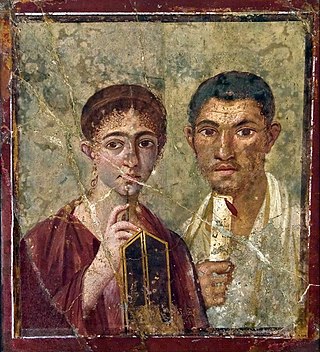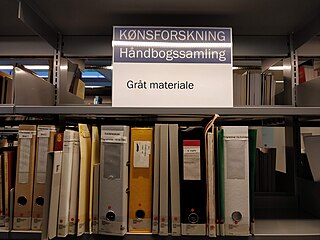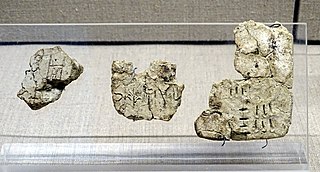The following outline is provided as an overview of and topical guide to education:

A citation is a reference to a source. More precisely, a citation is an abbreviated alphanumeric expression embedded in the body of an intellectual work that denotes an entry in the bibliographic references section of the work for the purpose of acknowledging the relevance of the works of others to the topic of discussion at the spot where the citation appears.

Scientific citation is providing detailed reference in a scientific publication, typically a paper or book, to previous published communications which have a bearing on the subject of the new publication. The purpose of citations in original work is to allow readers of the paper to refer to cited work to assist them in judging the new work, source background information vital for future development, and acknowledge the contributions of earlier workers. Citations in, say, a review paper bring together many sources, often recent, in one place.

In the study of history as an academic discipline, a primary source is an artifact, document, diary, manuscript, autobiography, recording, or any other source of information that was created at the time under study. It serves as an original source of information about the topic. Similar definitions can be used in library science and other areas of scholarship, although different fields have somewhat different definitions.

Bibliography, as a discipline, is traditionally the academic study of books as physical, cultural objects; in this sense, it is also known as bibliology. English author and bibliographer John Carter describes bibliography as a word having two senses: one, a list of books for further study or of works consulted by an author ; the other one, applicable for collectors, is "the study of books as physical objects" and "the systematic description of books as objects".

This page is a glossary of library and information science.
Internet research is the practice of using Internet information, especially free information on the World Wide Web, or Internet-based resources in research.
Source criticism is the process of evaluating an information source, i.e.: a document, a person, a speech, a fingerprint, a photo, an observation, or anything used in order to obtain knowledge. In relation to a given purpose, a given information source may be more or less valid, reliable or relevant. Broadly, "source criticism" is the interdisciplinary study of how information sources are evaluated for given tasks.

The following outline is provided as an overview of and topical guide to library and information science:

Grey literature is materials and research produced by organizations outside of the traditional commercial or academic publishing and distribution channels. Common grey literature publication types include reports, working papers, government documents, white papers and evaluations. Organizations that produce grey literature include government departments and agencies, civil society or non-governmental organizations, academic centres and departments, and private companies and consultants.
A source text is a text from which information or ideas are derived. In translation, a source text is the original text that is to be translated into another language.

Recorded history or written history describes the historical events that have been recorded in a written form or other documented communication which are subsequently evaluated by historians using the historical method. For broader world history, recorded history begins with the accounts of the ancient world around the 4th millennium BC, and it coincides with the invention of writing.

The reliability of Wikipedia and its user-generated editing model, particularly its English-language edition, has been questioned and tested. Wikipedia is written and edited by volunteer editors who generate online content with the editorial oversight of other volunteer editors via community-generated policies and guidelines. The reliability of the project has been tested statistically through comparative review, analysis of the historical patterns, and strengths and weaknesses inherent in its editing process. The online encyclopedia has been criticized for its factual unreliability, principally regarding its content, presentation, and editorial processes. Studies and surveys attempting to gauge the reliability of Wikipedia have mixed results. Wikipedia's reliability was frequently criticized in the 2000s but has been improved; it has been generally praised in the late 2010s and early 2020s.
Cambridge Scientific Abstracts was a division of Cambridge Information Group and provider of online databases, based in Bethesda, Maryland, before merging with ProQuest of Ann Arbor, Michigan, in 2007. CSA hosted databases of abstracts and developed taxonomic indexing of scholarly articles. These databases were hosted on the CSA Illumina platform and were available alongside add-on products like CSA Illustrata. The company produced numerous bibliographic databases in different fields of the arts and humanities, natural and social sciences, and technology. Thus, coverage included materials science, environmental sciences and pollution management, biological sciences, aquatic sciences and fisheries, biotechnology, engineering, computer science, sociology, linguistics, and other areas.

A review article is an article that summarizes the current state of understanding on a topic within a certain discipline. A review article is generally considered a secondary source since it may analyze and discuss the method and conclusions in previously published studies. It resembles a survey article or, in news publishing, overview article, which also surveys and summarizes previously published primary and secondary sources, instead of reporting new facts and results. Survey articles are however considered tertiary sources, since they do not provide additional analysis and synthesis of new conclusions. A review of such sources is often referred to as a tertiary review.
The UNISIST model of information dissemination was proposed in 1971 by the United Nations. UNISIST is a model of the social system of communication, which consists of knowledge producers, intermediaries, and users. These groups of people are different kinds of professionals. The social system also contains institutes such as research institutes, publishers, and libraries. The actors and institutions perform information services such as writing, publishing, storing and retrieving documents and information. The actors are communicating in both formal and informal ways and they are producing different kinds of documents such as journal articles, books, book reviews, proceedings, bibliographies and catalogues, dictionaries, handbooks, encyclopedias and review articles.
Source literature is a kind of information source. It might, for example, be cited and used as sources in academic writings, and then called the literature on the subject.
In the English version of the online encyclopedia Wikipedia, notability is a criterion to determine whether a topic merits a separate Wikipedia article. It is described in the guideline "Wikipedia:Notability". In general, notability is an attempt to assess whether the topic has "gained sufficiently significant attention by the world at large and over a period of time" as evidenced by significant coverage in reliable secondary sources that are independent of the topic". The notability guideline was introduced in 2006 and has since been subject to various controversies.

In scholarship, a secondary source is a document or recording that relates or discusses information originally presented elsewhere. A secondary source contrasts with a primary, or original, source of the information being discussed. A primary source can be a person with direct knowledge of a situation or it may be a document created by such a person.
Historical sources encompass "every kind of evidence that human beings have left of their past activities — the written word and spoken word, the shape of the landscape and the material artefact, the fine arts as well as photography and film."








